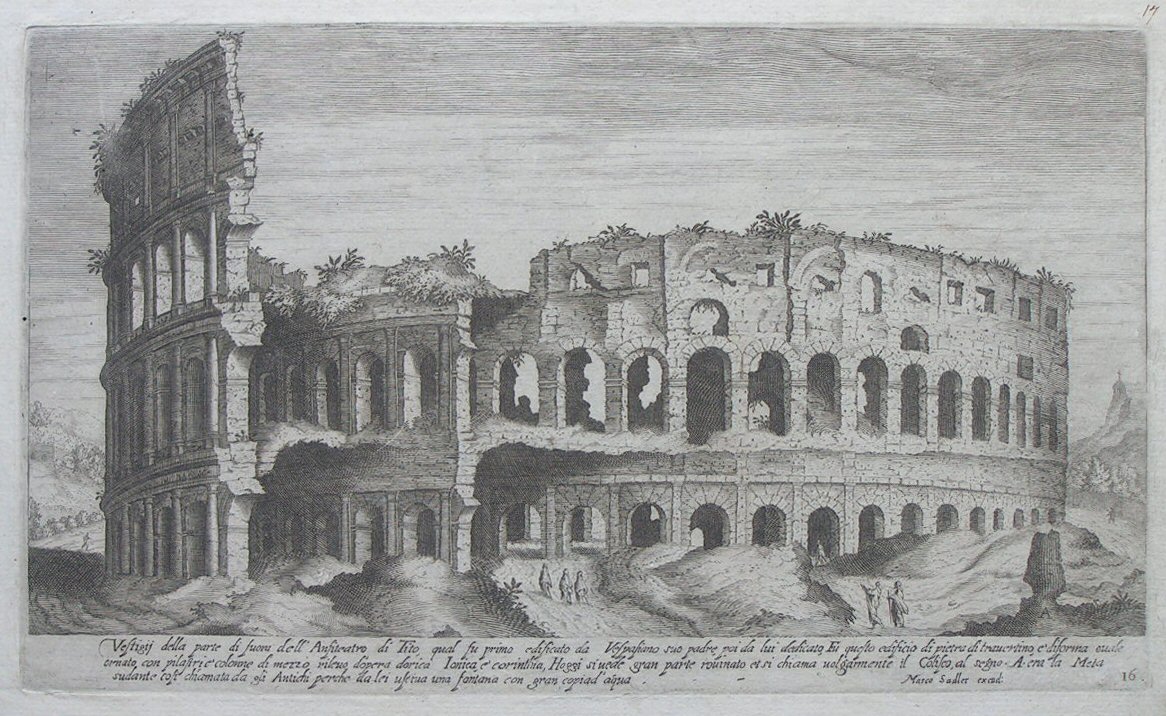
Italy is a country prone to earthquakes. Throughout the centuries the many tremors that have hit the city of Rome have taken with them parts of the grand edifices of ancient Empire. The Colosseum has suffered greatly throughout the centuries, dramatically altering its appearance.
After the Flavian Amphitheatre or Colisée was no longer used as a stadium, it was left abandoned; over the years it was stripped of marble and stone seats, statues along with columns and capitals. Perhaps the most ruinous of the looting was the removal of the iron clamps that once held the grand arched facade of the building in place. Over 300 tonnes of iron were dug out during the middle ages which left the building and particularly the large blocks of travertine unstable. Later came the earthquakes over successive centuries.
The “big one” that caused the most severe damage was in 1349. The earthquake, considered one of the most catastrophic events along the Apennines, (estimated as a 6.7-7 magnitude) was felt in the Lazio, Molise and Abruzzo Regions. The reach of this devastating earthquake was vast, the city of L’Aquila was almost entirely destroyed and the impact was sorely felt in Rome. The earthquake caused the outer ring on the south side of the Colosseum (the exit side today) to collapse. The massive impact that the earthquake had on the Colosseum was written about by a poet of the time, Francesco Petrarch. “…the massive building that so amazes the pilgrims fell among the old houses abandoned by the citizens”. From the second half of the 14th century this pile of rubble, also known as ‘the thigh of the Colisée’ was used as a quarry for travertine until the 1700s.
SO WHERE DID THE COLOSSEUM END UP?
- In 1439 some travertine was used to build the tribune of St. John in Lateran church
- From 1451-1452, over 2000 cartloads were taken away for use at the Vatican and the walls of Rome
- During the construction of the Palazzo Venezia in 1455, Pope Paul II had a special transport wagon to get the materials to his building site
- 15th c. some stones were used for the church of San Marco
- 16th c. travertine was used in the Palazzo Della Cancellaria, Palazzo Farnese, the Palazzi Senatorio and dei Conservatori on the Capitoline Hill, and in an attempt to restore the Ponte Emilio, also known as Ponte Rotto
- 17th c. Urban VIII used some material at Palazzo Barberini

As the masters of the Renaissance finally started to appreciate the value of history, they were destroying the most historic and iconic site that had inspired them. The masonry of the colosseum would be recycled for over 300 years. Finally, in the 18th century Pope Benedict XIV put an end to the pillaging of the colosseum when the monument was declared a public church. From this point onwards successive popes would restore areas and two architects were employed to buttress the outer rings which were near to collapse.

In 1820 the architect Raffaele Stern completed his work to reinforce and support the arches that remain on the northwest side, completing what is now known as the “Stern abutment”; in recent years a new entrance has opened here to allow direct access onto the arena. In 1826, architect Giuseppe Valadier built a more aesthetically cohesive abutment on the opposite, more photographed, side of the monument (where the main entrance is today).
Almost two thousand years after it was built the Colosseum still stands in glory. Battered by time, earthquakes and fire, looting and misuse; we can still appreciate the grandeur and majesty of the largest amphitheatre of the Roman world and the most visited monument in Italy.
